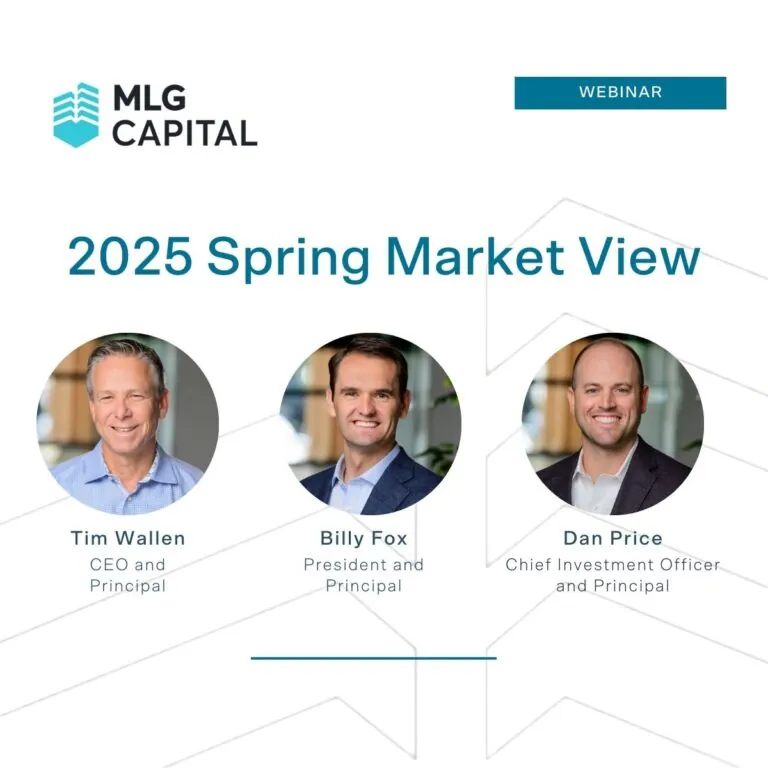-
August 21, 2025
Why You Should Consider Investing in Private Real Estate
Perhaps you’ve thought about diversifying your traditional portfolio and considered real estate as a potential solution. Or, maybe you’re only familiar with real estate investment trusts (REITs) as a form of real estate investing. The world of private real estate provides new, and in my opinion, strategic alternatives compared to simply investing in public REITs. In a world where everything feels like it’s been turned upside down, many investors take comfort in the familiarity and ease of stocks and bonds, but they may miss out on the opportunities and benefits private real estate offers. It’s been my experience that investors recognize the advantages to private real estate but are apprehensive to take the jump into investing due to the unfamiliarity of it. Investing in private real estate may offer benefits you may not find in a portfolio made up of REITS, stocks and bonds alone: Diversification Low correlation to public markets and less volatility Tax-deferred income Cash flow and long-term appreciation Let’s take a deeper dive: DIVERSIFICATION Geographic, asset type, and real estate manager diversification is a key part in creating a successful investment portfolio, as it has the potential to shield investors from added risk, and it can also preserve an investor’s capital. Many private real estate investments are done on a local basis, primarily investing in their local communities. Don’t get me wrong, this is great for the local market and community, but it doesn’t help to diversify an investment portfolio across asset classes and markets. With a private real estate fund, investors may be exposed to various…
-
August 19, 2025
The Tax-Efficient Power of Reinvestment
Private real estate is a tax-advantaged asset class. At MLG, we first focus on making smart real estate investment decisions, then wrap strategic tax planning around those decisions. One financial strategy our investors can take advantage of is the power of reinvesting over time. When one of our older funds produces a large distribution following the sale of a property, many of our investors consider making new investments into our newest fund. New investments generally create fresh tax losses that could be used to offset taxable income from prior funds within the same year. Illustrating the Tax Efficiency of Reinvestment To illustrate the power of reinvestment, let’s see what potential tax savings could occur from an investor using their proceeds from a distribution in an older fund to make a new investment into our latest fund offering. This scenario is hypothetical and is not representative of any investment offered by MLG. Additionally, it is always wise to consult your tax professional before making any investment decision. Let’s assume an investor made a $250k investment in a diversified private real estate fund. Let’s also assume that a property sale from such fund produced a return of capital of 20% of their original…
-
July 22, 2025
Comparing Private Real Estate Funds and REITs: Considering Your Options
Real estate has long been a cornerstone of wealth building, offering both income and appreciation potential. But not all real estate investments are created equal. For those looking to access the benefits of commercial real estate without owning and managing properties directly, two popular vehicles stand out: Private Real Estate Funds and Real Estate Investment Trusts (REITs). While both can play a role in a diversified investment strategy, you must understand their structure, benefits, and limitations in order to choose the right approach for your financial goals. What Are REITs? REITs are companies that own or finance income-producing real estate. They were created to allow individual investors to earn returns from real estate without having to buy or manage properties themselves. REITs pool capital from investors and pay out dividends derived from rent or interest income. There are three primary types of REITs: Publicly Traded REITs Public Non-Traded REITs Private REITs One appealing aspect of REITs is their accessibility. With relatively low investment minimums and the ability to buy shares through a brokerage account, they offer a straightforward entry point into real estate investing. Private REITs vs. Public REITs While both private and public REITs give investors access to commercial real estate, their…
-
July 14, 2025
What the Enacted Tax Bill Could Mean for Real Estate and MLG Investors in 2025
At MLG Capital, we monitor legislative developments that could influence the real estate investment environment. One such development is the “One Big Beautfiul Bill Act, which introduces provisions with meaningful implications for real estate investors. Several newly passed elements are worth noting. These provisions may create opportunities for enhanced tax efficiency. As always, investors should consult with their personal tax advisors and evaluate them in the context of their individual financial situations. 100% Bonus Depreciation: Accelerating Deductions One beneficial aspect of the bill for real estate is the extension of 100% bonus depreciation. This provision allows for the immediate expensing of certain capital investments in the first year for qualified property acquired and placed in service after January 19, 2025. This results in real estate investments offering the potential to defer taxes due to allocations of losses to investors in early years of an investment. For example, in the context of MLG Capital’s Private Fund VII, we estimate that this may result in 2025 beneficial net rental losses of approximately 50-60%[1] as a percentage of capital contributed while also receiving nontaxable distributions. Assuming these losses are passive, which is the case for most Private Fund VII investors, they then must…
-
July 10, 2025
Inside MLG’s Latest Offering: Private Fund VII and the Power of Diversification
Private real estate has long played a role in wealth preservation and long-term capital growth. At MLG Capital, we believe that tax efficient cash flow and long-term appreciation from diversified real estate continues to be a compelling option for building a durable investment portfolio, particularly in today’s evolving market environment. With the launch of MLG Private Fund VII, we are building on our 38-year history of helping investors access diversified private real estate opportunities. Why Consider Private Real Estate? Private real estate may offer several characteristics that appeal to long-term investors: Tangible, income-producing assets that target capital preservation and may serve as an inflation hedge Tax-advantaged structures that may enhance after-tax returns Reduced correlation to public markets, supporting portfolio diversification Potential for both current income and long-term appreciation These attributes have historically contributed to the appeal of private real estate across market cycles and are foundational to the design of MLG Private Fund VII. Similar to Fund VI, the fund offers two entry vehicles, Private Fund VII and Dividend Fund VII. Each are structured to align with different investor preferences and tax considerations. Our Approach: Diversified, Disciplined, Value-Driven MLG Private Fund VII primarily targets quality multifamily assets across the U.S.,…
-
June 23, 2025
Potential Benefits of Investing in Private Real Estate Funds
For accredited investors looking to expand beyond traditional stocks and bonds, private real estate funds have become an increasingly attractive option. These funds have the potential to provide access to professionally managed, income-generating properties, while potentially providing diversification, stability, and tax benefits. At MLG Capital, we’ve spent over 38 years helping investors grow and protect their wealth through private real estate. Below, we explore the key reasons why this asset class has become a cornerstone in many sophisticated portfolios. Why Invest in Private Real Estate Funds Greater Diversification Supports Investment Stability One of the most compelling benefits of private real estate funds is the ability to diversify in ways that individual investors often cannot achieve on their own. MLG Capital’s funds invest across multiple property types and regions throughout the United States. Geographic diversification reduces exposure to localized economic challenges. What’s happening in one city or state does not dictate the performance of the entire portfolio. Meanwhile, asset type diversification (across multifamily, industrial, retail, and office properties) helps balance sector-specific risks. When one asset class softens, another may remain stable or even grow. Enhancing Portfolio Resilience Investing in alternatives like real estate introduces an asset class that has traditionally had…
-
May 21, 2025
Market View 2025: MLG Capital’s Strategic Outlook for Private Real Estate
Each year, MLG Capital issues its Market View commentary to offer a clear, data– driven perspective on the state of the private commercial real estate market. In Spring 2025, CEO Tim Wallen, President Billy Fox, and CIO Dan Price convened to discuss market trends and where they see opportunity in the market today. The following highlights from our 2025 Market View discussion explore where we see risk, where we see resilience, and why we are actively deploying capital in the current environment. Key Themes from the Spring 2025 Market View Discussion Soft net operating income (NOI) is creating tactical entry points, not permanent impairments. Operating income across multifamily assets has come under short–term pressure due to record supply deliveries in 2023 and 2024, particularly in high-growth markets such as the Sunbelt. This temporary imbalance has generally reduced occupancies, flattened rent growth, and increased concessions. MLG views this softness not as structural deterioration, but as a cyclical occurrence that is already beginning to normalize in select markets. As operational performance recovers, assets acquired during this window may benefit from meaningful NOI growth over the mid– to long–term. The supply and demand imbalance is correcting and setting the stage for future…
Blog
Investing in private real estate across all aspects of the business has put our team in the unique position to allow us to share our industry knowledge. Want to learn more about MLG or real estate? Take a look below.
Subscribe to Our Blog
Scroll Down
Featured Articles
Subscribe to MLG Updates
Join our mailing list to get the latest news and blog updates from MLG!






